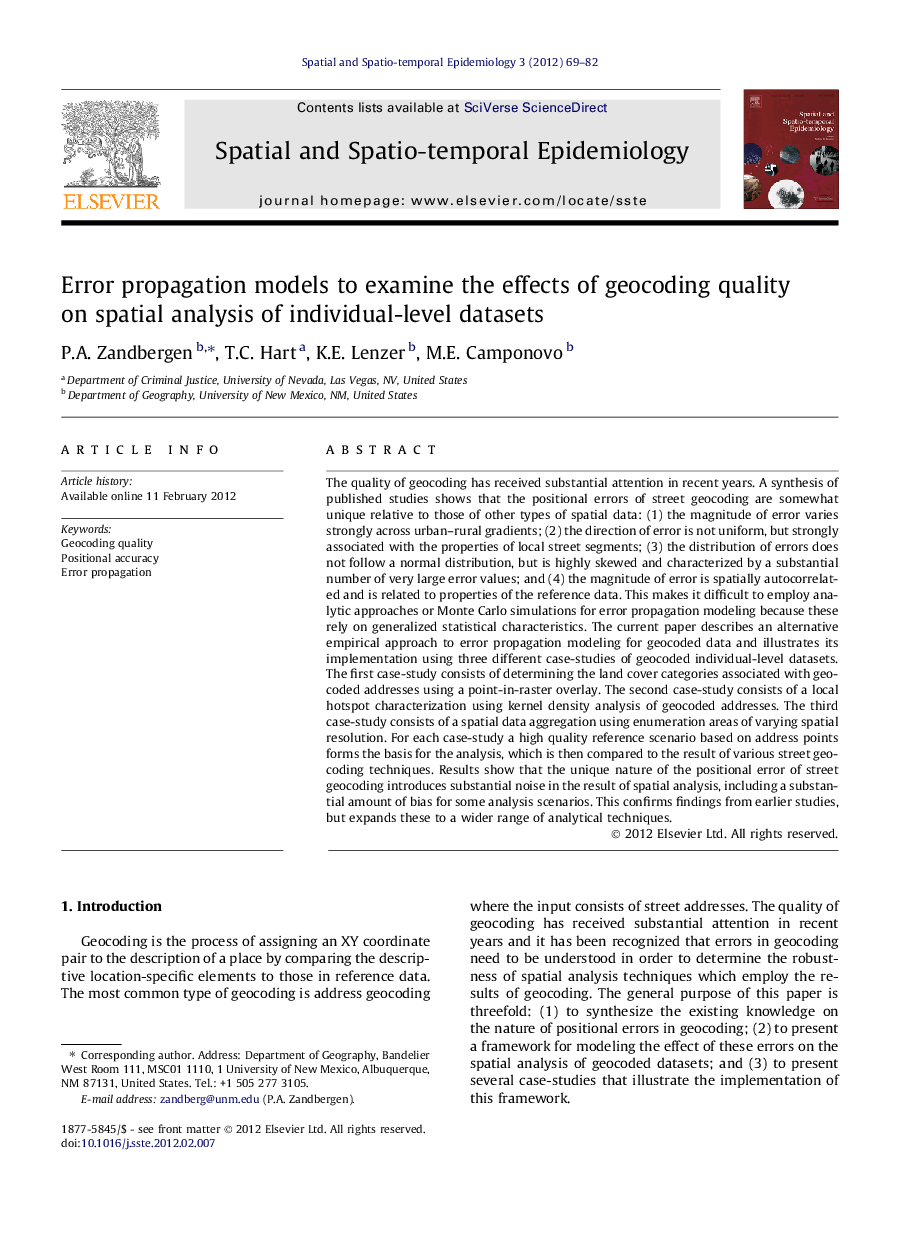| کد مقاله | کد نشریه | سال انتشار | مقاله انگلیسی | نسخه تمام متن |
|---|---|---|---|---|
| 1064342 | 948467 | 2012 | 14 صفحه PDF | دانلود رایگان |
The quality of geocoding has received substantial attention in recent years. A synthesis of published studies shows that the positional errors of street geocoding are somewhat unique relative to those of other types of spatial data: (1) the magnitude of error varies strongly across urban–rural gradients; (2) the direction of error is not uniform, but strongly associated with the properties of local street segments; (3) the distribution of errors does not follow a normal distribution, but is highly skewed and characterized by a substantial number of very large error values; and (4) the magnitude of error is spatially autocorrelated and is related to properties of the reference data. This makes it difficult to employ analytic approaches or Monte Carlo simulations for error propagation modeling because these rely on generalized statistical characteristics. The current paper describes an alternative empirical approach to error propagation modeling for geocoded data and illustrates its implementation using three different case-studies of geocoded individual-level datasets. The first case-study consists of determining the land cover categories associated with geocoded addresses using a point-in-raster overlay. The second case-study consists of a local hotspot characterization using kernel density analysis of geocoded addresses. The third case-study consists of a spatial data aggregation using enumeration areas of varying spatial resolution. For each case-study a high quality reference scenario based on address points forms the basis for the analysis, which is then compared to the result of various street geocoding techniques. Results show that the unique nature of the positional error of street geocoding introduces substantial noise in the result of spatial analysis, including a substantial amount of bias for some analysis scenarios. This confirms findings from earlier studies, but expands these to a wider range of analytical techniques.
Journal: Spatial and Spatio-temporal Epidemiology - Volume 3, Issue 1, April 2012, Pages 69–82
